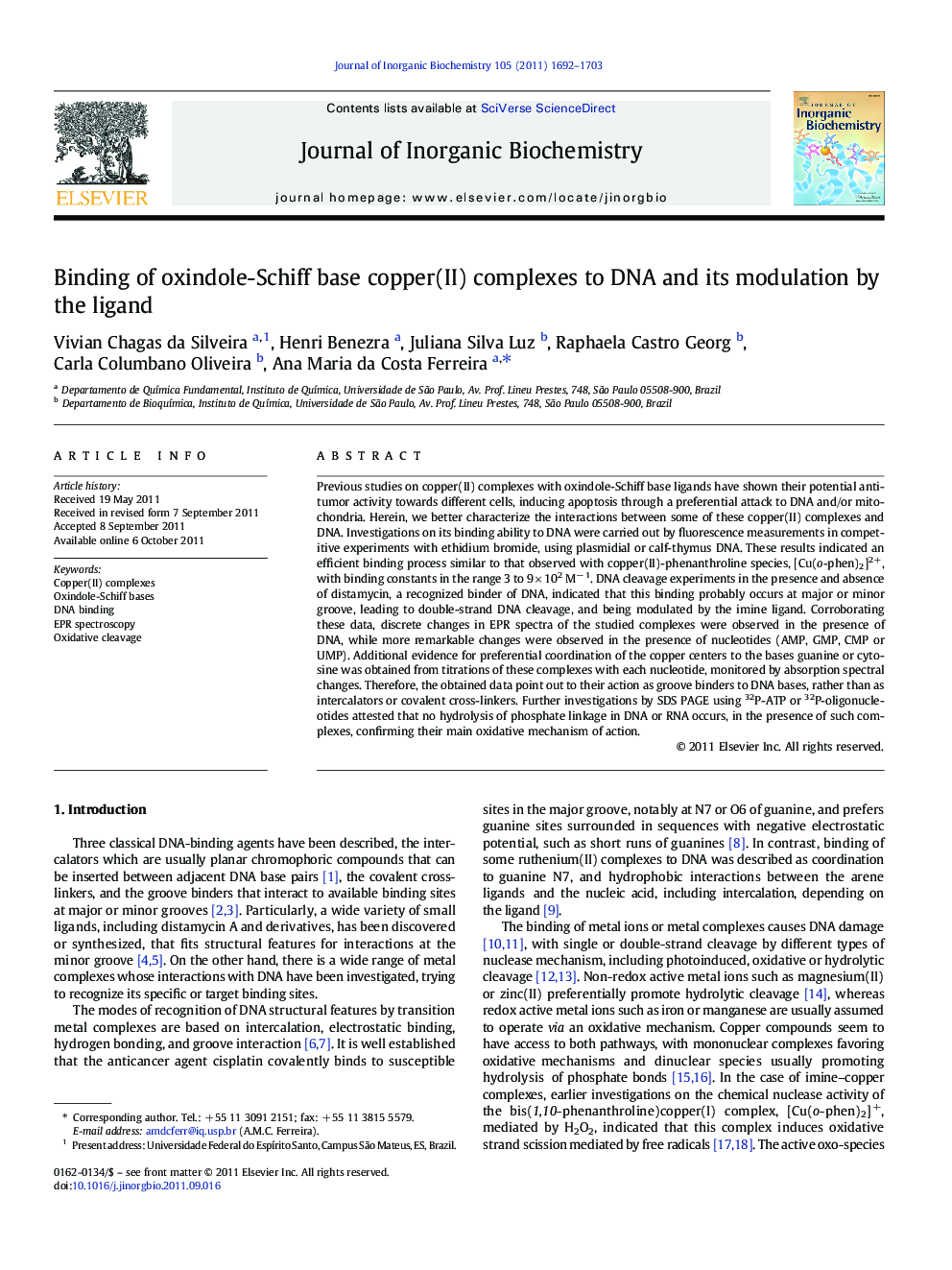| کد مقاله | کد نشریه | سال انتشار | مقاله انگلیسی | نسخه تمام متن |
|---|---|---|---|---|
| 1317891 | 976599 | 2011 | 12 صفحه PDF | دانلود رایگان |

Previous studies on copper(II) complexes with oxindole-Schiff base ligands have shown their potential antitumor activity towards different cells, inducing apoptosis through a preferential attack to DNA and/or mitochondria. Herein, we better characterize the interactions between some of these copper(II) complexes and DNA. Investigations on its binding ability to DNA were carried out by fluorescence measurements in competitive experiments with ethidium bromide, using plasmidial or calf-thymus DNA. These results indicated an efficient binding process similar to that observed with copper(II)-phenanthroline species, [Cu(o-phen)2]2+, with binding constants in the range 3 to 9 × 102 M− 1. DNA cleavage experiments in the presence and absence of distamycin, a recognized binder of DNA, indicated that this binding probably occurs at major or minor groove, leading to double-strand DNA cleavage, and being modulated by the imine ligand. Corroborating these data, discrete changes in EPR spectra of the studied complexes were observed in the presence of DNA, while more remarkable changes were observed in the presence of nucleotides (AMP, GMP, CMP or UMP). Additional evidence for preferential coordination of the copper centers to the bases guanine or cytosine was obtained from titrations of these complexes with each nucleotide, monitored by absorption spectral changes. Therefore, the obtained data point out to their action as groove binders to DNA bases, rather than as intercalators or covalent cross-linkers. Further investigations by SDS PAGE using 32P-ATP or 32P-oligonucleotides attested that no hydrolysis of phosphate linkage in DNA or RNA occurs, in the presence of such complexes, confirming their main oxidative mechanism of action.
Interactions between oxindole-Schiff base copper(II) complexes and DNA were characterized, in order to clarify its probable mechanism of action as potential antitumor agents, inducing apoptosis through a preferential attack to DNA and/or mitochondria. Investigations on its binding ability to DNA were carried out by fluorescence, absorption, CD and EPR measurements.Figure optionsDownload as PowerPoint slide
Journal: Journal of Inorganic Biochemistry - Volume 105, Issue 12, December 2011, Pages 1692–1703